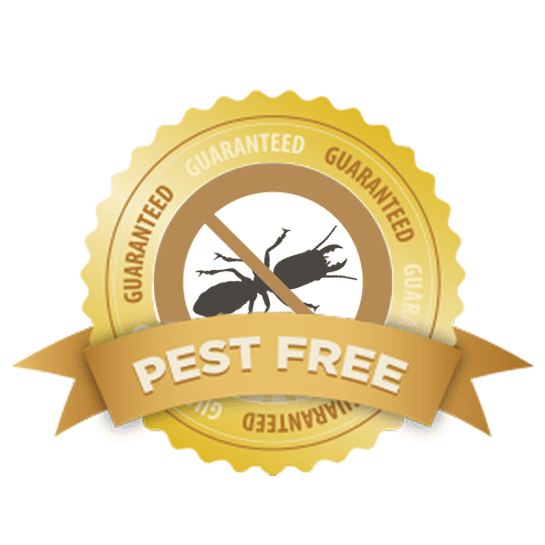A1 Charlotte Pest Control Companies - Your Regional Pest Experts
A1 Charlotte Pest Control Companies - Your Regional Pest Experts
Blog Article
Bed Insect Treatment Malfunction: Comparing Chemical Vs. Non-Chemical Solutions
In the realm of bug control, particularly when managing the persistent problem of bed insects, the choice in between chemical and non-chemical treatment services can be a critical one. Both strategies supply distinctive advantages and disadvantages, influencing factors such as effectiveness, safety factors to consider, and total expense. By checking out the nuanced details of each technique, a clearer understanding of which course to seek in attending to a bed bug problem can be obtained.
Efficiency of Chemical Therapies
Chemical therapies for bed pest invasions have been commonly identified for their powerful and fast efficiency in getting rid of these bugs. When taking into consideration the performance of chemical treatments, it is crucial to comprehend that they can give a extensive and quick option to a bed bug problem.
Additionally, chemical therapies have the benefit of offering recurring effects, implying that they can remain to get rid of bed insects also after the first application. This residual activity is specifically advantageous in combating any possible re-infestations. Additionally, the fast action of chemical therapies can bring alleviation to people dealing with severe bed pest infestations, permitting them to reclaim control of their space swiftly.
Security Worry About Chemical Solutions
One vital element that requires cautious factor to consider when making use of chemical remedies for bed pest treatment is making certain the security of occupants and the atmosphere. While chemical therapies can be efficient in eradicating bed bugs, they might present dangers otherwise dealt with properly. One of the key safety and security issues with chemical services is the potential injury they can cause to human wellness. Direct exposure to certain chemicals used in bed bug treatments can cause breathing issues, skin irritation, or various other adverse reactions, particularly in individuals with pre-existing problems or sensitivities. Additionally, inappropriate application or dosage of chemical pesticides can result in poisonous residues lingering in the cured location, posing lasting health and wellness dangers to passengers.
In addition, the ecological impact of chemical options is one more substantial consideration. Some chemicals utilized in bed pest treatments may be damaging to useful bugs, wild animals, and ecosystems if they seep into the soil or water systems. It is necessary to make use of chemical therapies judiciously, complying with safety and security standards, and considering less toxic alternatives to minimize these threats and make sure the secure and efficient management of bed insect problems.
Benefits of Non-Chemical Techniques
Thinking about the possible security problems and environmental impact linked with chemical remedies for bed bug therapy, exploring non-chemical strategies presents an appealing option with numerous unique benefits. Non-chemical approaches offer a more secure choice for families, particularly those with individuals, pet dogs, or kids delicate to harsh chemicals. These techniques eliminate the dangers of exposure to poisonous compounds, reducing the possibility for adverse health and wellness effects. Additionally, non-chemical treatments are eco-friendly, as they do not add to air or water air pollution, making them a lasting selection for bug control.
In addition, non-chemical remedies can be efficient in targeting bed pests, including hard-to-reach locations where chemical therapies might not pass through - A1 bed bug exterminator charlotte. Methods such as heat treatment, vacuuming, steam cleansing, and cushion encasements supply extensive elimination without the use of harmful chemicals.
Limitations of Non-Chemical Treatments

Additionally, non-chemical therapies usually need multiple applications to attain successful removal. This can be time-consuming and may not constantly ensure complete elimination of all bed insects and their eggs, particularly in hard-to-reach or surprise locations.
Furthermore, the success of non-chemical treatments heavily counts on proper execution and thoroughness, which can be testing for people without expert knowledge. Insufficient application of non-chemical approaches may lead to insufficient removal, causing consistent infestations and the need for extra therapies.
As a result, while non-chemical therapies have their advantages, it is important to recognize these constraints and consider them when identifying one of the most reliable technique for handling bed insect problems.
Cost Comparison: Chemical Vs. Non-Chemical Options
Given the restrictions connected with non-chemical therapies, a vital facet to evaluate in the context of bed pest management is the cost contrast in between chemical and non-chemical alternatives. Chemical treatments generally involve the application of insecticides by professionals, which can range from $250 to $900 per space, depending upon the intensity of the infestation and the dimension of the area to be dealt with. On the other hand, non-chemical therapies like warm therapy or vapor can be much more pricey, with costs varying from $1,000 look at more info to $6,000 for an entire home. While the initial cost of chemical treatments might appear lower, multiple therapies may be required to totally remove the problem, potentially boosting the total price. On the various other hand, non-chemical alternatives might supply a much more lasting and eco-friendly service, although they can be cost-prohibitive for some people. Ultimately, when taking into consideration the price of bed pest therapy choices, it is essential to consider the in advance expenses against the effectiveness and long-term sustainability of the selected approach.
Verdict

Taking into consideration the possible safety and security problems and environmental effect linked with chemical services for bed pest therapy, checking out non-chemical approaches provides an encouraging choice with several distinctive benefits.Offered the constraints linked with non-chemical treatments, a vital facet to review in the context of bed bug administration is the price comparison in between chemical and non-chemical alternatives. In contrast, non-chemical therapies like warm treatment or steam can be extra pricey, with prices varying from $1,000 to $6,000 for a whole home. While the preliminary price of chemical therapies might appear lower, numerous therapies may be called for to fully remove the invasion, potentially enhancing the overall price.In conclusion, when contrasting chemical and non-chemical bed pest therapy options, it is necessary to consider efficiency, security, benefits, limitations, and cost.
Report this page